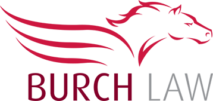NOTE: This information is changing on a daily basis, please contact us with the most recent information.
Everyone is feeling pain during the Covid-19 shutdown, including previously solid businesses, and their employees, that are having to close or stop work indefinitely in the face of increasingly draconian measures to stop the virus from spreading. To help ease the pain, the government has allotted $350 billion for the Payroll Protection Program as part of its $2 trillion stimulus bill. So, if you are a small business owner, what can you do to get your share? See below:
- Know whether you are eligible to apply:
The PPP loans generally are available for small businesses with 500 or less employees, including sole proprietorships, independent contractors, nonprofits, tribal businesses, and in some cases, businesses like hospitality and restaurant businesses with more then 500 employees in aggregate, but less than 500 at each location (see the SBA rules at the link provided below). Independent contractors and the self-employed must wait until April 10, 2020 to apply. Otherwise, applications are already being taken, but the application process is off to a rocky start, as both lenders and applicants don’t understand the rules yet, and the rules are still being tweaked, with other relief programs, not necessarily for small business though, coming down the pipeline. Under the PPP, you need to have had employees on the payroll by 2/15/2020, and they must be rehired by 6/30/2020 if you let them go due to the economic shutdown. You can read eligibility rules and other detailed information regarding the PPP guidelines on the Small Business Administration (SBA)’s website.
- Understand the lenders’ lending rules:
The most important thing to know is that the lenders are operating under a “Know your Customer” rule following the debacle of the 2008 downturn after which many of them were held liable for loans to fraudulent applicants. The lenders, for the most part, have posted rules on their websites. Bank of America, for instance, is requiring applicants to have had a loan with their bank by 2-15-2020; and Chase is requiring applicants to have had a business checking account with them by 2-15-2020. Wells Fargo has already exhausted the available loan funds unavailable under the regulatory cap imposed on the bank due to past irregularities. If you fit the “Know your Customer” criteria and met 2-15-2020 deadlines, you can apply at any federally insured depository bank, credit union, participating Farm Credit System institution, or SBA7(a) lender that “knows” you. And more lenders are applying and being approved as you are reading this article, up to 150 per hour, as per a treasury department briefing to bankers on April 6th. Applicants have until June 30, 2020 to apply, and loans are being processed on a 1st come, 1st served basis. To date, while many applications, for tens of billions of dollars in value, have already been submitted, not very many have been approved, as applicants did not meet the “Know your Customer” criterion. But that said, it still is a good idea to get your application documentation together and apply as soon as possible.
- Be able to document your application:
A link to the application itself is provided below. To support your application, you will need to provide proof of your employee headcount average for 2019 and your average monthly payroll costs in 2019, or if you are a new business, you will need to provide that for January and February 2020. You won’t have to put up collateral or a personal guarantee for the loan, but there are criminal penalties for fraud. If your application is successful, you should receive the equivalent of 2.5 months of your average payroll expense in 2019, or if you are a new business, your average payroll expense for January and February 2020(through 2/25/2020). See more about the application form and its documentation requirements on the SBA website and lender websites.
- Apply your loan proceeds properly to receive loan forgiveness:
You can use the proceeds of your loan on business overhead costs like payroll, rent, utilities, and mortgage interest, and the loan will be forgiven, without you having to pay income tax on the forgiven amount, if you apply at least 75% of the proceeds to payroll costs within 8 weeks after receiving the loan, and maintain your employee headcount without cutting their pay. Remember, only the interest part of a mortgage payment will be forgiven, so you need to apply your loan proceeds wisely.
- Document your use of loan proceeds and present them to your lender for loan forgiveness:
8 weeks after you receive your loan, you will need to prove to your lender your expenses and how you spent the loan proceeds, so maintaining good documentation of this is essential (and may already be part of your ongoing business practice). Even if you find that you really need to pay the business’s mortgage, and not just the interest, with your loan amount, and you can’t meet the loan forgiveness criteria, all is not necessarily lost. The interest that will be charged on the loan is only 1%, and repayment is deferred for 6 months.
Other relief for small business owners, besides the new PP loans, is available through disaster assistance, and enhanced debt relief in other SBA loan programs. Right now, we are all in the same boat basically during the economic shutdown, and it is important to seek widely for all the available forms of relief that might help. A PPP loan is a good start though.
By Jen Green, Burch Law





